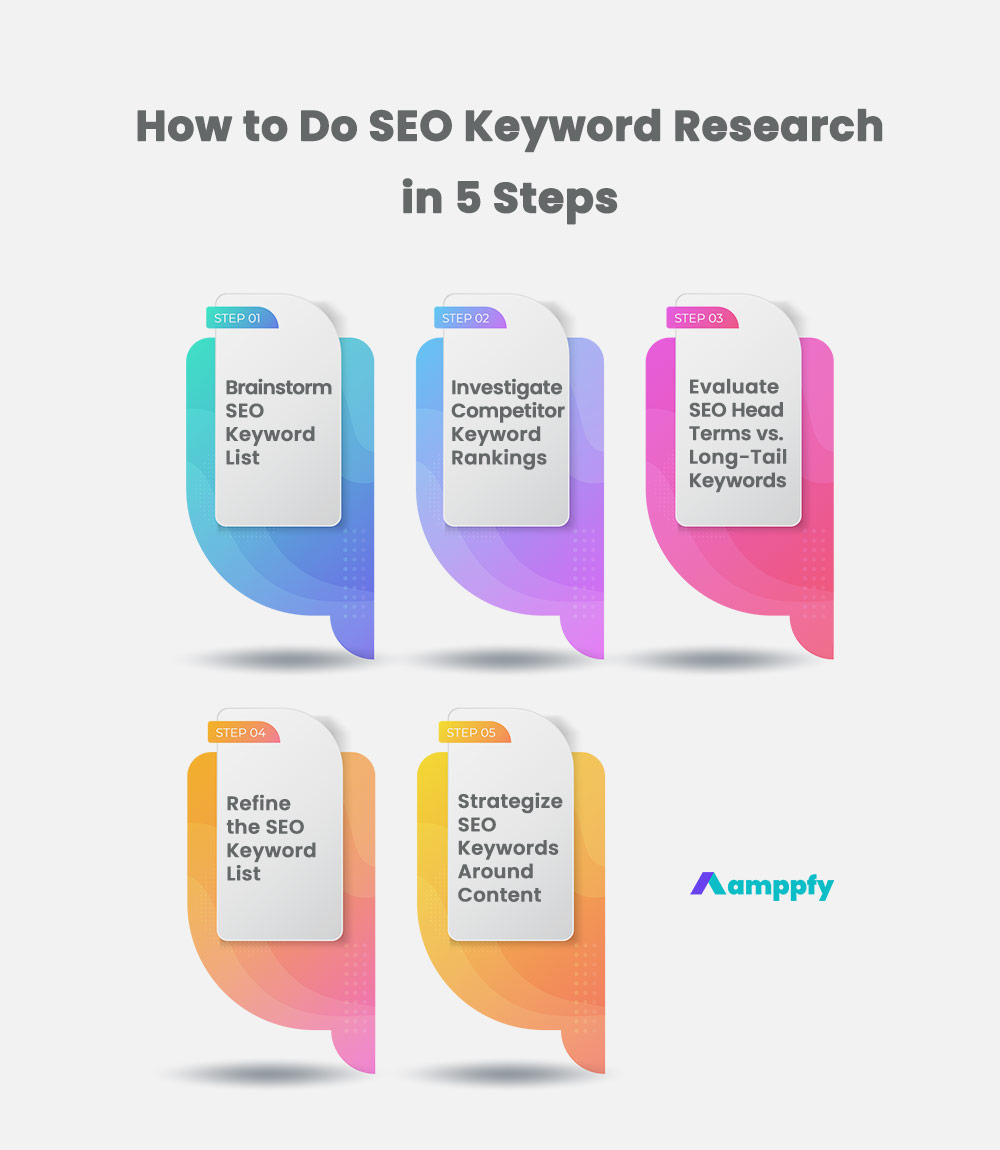Does my business have demand online, and who is searching for my product, service, or content? Great question. Let’s find out with keyword research. SEO keyword research uncovers what phrases prospects and customers use to look for businesses similar to yours in search engines. Higher ranking of relevant keywords in the top position of search results increases website visibility.
What is SEO Keyword Research?
Keyword research is the core of SEO (Search Engine Optimization)and integral to digital marketing success. It is an essential strategy that drives organic traffic and SEO content marketing.
How SEO Keyword Research Improves Search Engine Optimization
Keyword research increases the visibility of a website, and it signals what prospects and customers are looking for online related to your business. When a website captures relevant search traffic, it gains more opportunities to convert potential leads into sales.
Top 3 Benefits of SEO Keyword Research

- Reveal valuable data about market demands and trends.
- Uncover how many people search for specific products or services through keyword search volume.
- Identify winning keywords and phrases to optimize website content for better SEO ranking.
How to Pick the Right Keywords to Improve SEO
The objective of keyword research is to identify the most profitable keywords with the highest conversion rate and lowest cost of acquisition. Use keyword research tools to uncover lucrative keywords in opportunistic niche markets to win search rankings.
SEO Keyword Value and Analytics Data
Not every keyword has equal value in terms of boosting SEO efforts. There can be keywords unique to a business that a generic search does not account for.
Example of SEO Keyword Value
For instance, an industry-specific long-tail keyword like “espresso coffee machine with bean grinder” may generate more engagement than a keyword like “coffee machine.” Even though the keyword “coffee machine” can have significantly more search volume than the long-tail phrase “espresso coffee machine with bean grinder.”
How to Uncover SEO Long Tail Keywords
Generic keywords are a good starting point to refine keyword research and discover more opportunistic long-tail keywords.
Example of How to Uncover SEO Long Tail Keywords from Generic Keywords
Continuing from the example above, you can uncover industry-specific long-tail keywords by starting with highly searched generic keywords:
- Coffee machine.
- Espresso coffee machine.
- Espresso coffee machine with bean grinder.
- All-in-one espresso coffee machine with bean grinder and milk frother.
The Importance of Analytics-Based SEO Keyword Research
Keyword research tool reveals each keyword’s search volume, ranks its competitiveness, and identifies similar phrases. However, it cannot determine the relevancy of each keyword specific to your business and your customer’s search query. This is when a website’s analytics data comes to play. Keyword research should always be based on analytics to yield the most accurate results tailored to the unique business needs and effectively scale revenue long term.
Improve Search Engine Optimization with SEO Keyword Research Strategy
There’s no one-size-fits-all solution to keyword research because every business is different. It takes time and the right approach to develop a list of high-search volume keywords that work specifically for your target audience and business needs.
Let’s go over proper keyword research in five easy-to-follow steps.
How to Do SEO Keyword Research in 5 Steps

Step #1: Brainstorm SEO Keyword List
Start a search by making the most educated guesses on phrases best describe a product or service. Come up with broader categories first. Then fill in each category with appropriate keywords most relevant to the webpage content.
Check Google Related Searches for New Keyword Ideas
Use Google Related Searches section to get new ideas. Check the related keywords section at the footer of every Google search result page. It reveals what other suggested keywords are related to a particular search query. For more keyword ideas, click on Google’s suggested phrase and look for its related terms. Also, look for keyword data from Google Search Console. It effectively identifies the keywords prospects or customers use to look up your products or services.
Step #2: Investigate Competitor Keyword Rankings with SEO Keyword Research Tool
Once you have curated a workable keyword list, it’s time to assess where you stand against the competition. Use advanced keyword research tools like Semrush to stack your keyword rankings against similar websites in the same niche.
[elementor-template id=”981″]
Uncover New Market Shares with Competitor SEO Keyword Mining
A solid SEO keyword research tool reveals a website’s top competitors, their best keywords, and website visibility changes. It also highlights strengths and weaknesses in your organic search, paid search, and backlinks compared to similar websites. Results are presented in visual charts to better identify the areas where a website needs improvement.
This is an effective strategy to gauge keyword competitiveness and determine your ranking within the industry. At the same time, it identifies keywords you are missing out on that the competitors are ranking for. Use this information to re-evaluate current keyword strategies and capture new market shares with unexplored long-tail keywords to open up more opportunities.
Step #3: Evaluate SEO Head Terms Versus SEO Long Tail Keywords
A healthy keyword strategy involves both head terms and long-tail keywords. Let’s take a look at their differences.
SEO Head Terms Versus SEO Long Tail Keywords
- Head terms refer to popular or the most searched keywords.
- Long-tail keywords are extended phrases that typically yield lower search volume but provide a more precise intent behind the searched term.
What are Head Terms?
Head terms are usually broad and generic terms used in search and are typically highly competitive. They tend to have higher frequencies of being searched and are traditionally more challenging to rank.
Example of an SEO Head Term
Try searching for the word “car” in Google. About 2 billion webpages want to rank for the keyword “car.”
How to Incorporate SEO Head Terms in Content
While the competition is intense, don’t avoid head terms. Instead, incorporate head terms into long-tail key phrases, and make these trophy terms part of your long-term ranking goal. As a website gains authority, ranking for these head terms becomes more manageable and benefits long-term SEO efforts.
What are Long Tail Keywords?
Long-tail keywords are keyword-containing phrases with a precise intent behind the search query. They may have a lower search volume but yield a better conversion rate, providing more opportunities for higher keyword ranking in niche markets.
Example of an SEO Long Tail Keyword
Returning to the “car” example, many car-related terms exist. It is almost impossible for search engines to find exact matches from the overwhelming 2 billion results. Instead, try expanding the search term from “car” to “affordable electric car sedan” as an example.
How to Incorporate SEO Head Terms in Content
As visitors search for long-tail keywords a website ranks for, there is a higher probability of conversion. Especially when the long-tail keyword closely matches the user’s intent behind a search query. Long-tail keywords can be lucrative search gold mines that improve click-through rate and increases organic traffic in the long run.
Step #4: Refine the SEO Keyword List
Once there is a preliminary group of keywords, narrow that list down with a keyword research tool. Focus on keywords relevant to the business that drive sales or leads, adding value to the overall SEO strategy.
Keep this in mind as you work through the keyword list. Long-tail keywords may have lower search volume but are more lucrative by having apparent intent behind the search terms. Broader head terms may be competitive but are necessary for long-term keyword ranking goals. A good tip is to assign a value to each keyword and continue testing until you have identified a list of the most relevant keywords that brings the most organic traffic to a website.
Step #5: Strategize SEO Keywords Around Content
In SEO, keyword research and content optimization go hand in hand. The purpose of creating a keyword strategy is to make content more searchable and to increase organic traffic.
Here are two strategies to naturally optimize content with the right amount of keywords to improve search ranking.
Top 2 SEO Keyword Strategies to Optimize Content
Strategy 1: Leverage Top-Trending SEO Keywords to Outline New Content
Leverage free tools like Google Trends to identify current trending keywords in a niche as the basis for new content. This strategy opens more opportunities to discover unexplored new markets. Then use keyword research tools like Semrush to expand the keywords you can win related to the trending topic.
Strategy 2: SEO Keyword Optimize Title, Headings, and ALT Tags
Place keywords in titles, paragraph headings, meta descriptions, and image ALT tags allow keywords to flow in the content naturally. Learn more about using H headings, meta descriptions, and ALT tags in our technical SEO strategies resource.
Example of SEO Keyword Optimization in Title, Headings, and ALT Tags
For example, create an image ALT tag with keywords in the image file name so search engines can index it. It is also a good idea to optimize H1 (title heading) and H2 (paragraph) headings with keywords or include them in the call-to-action elements.

